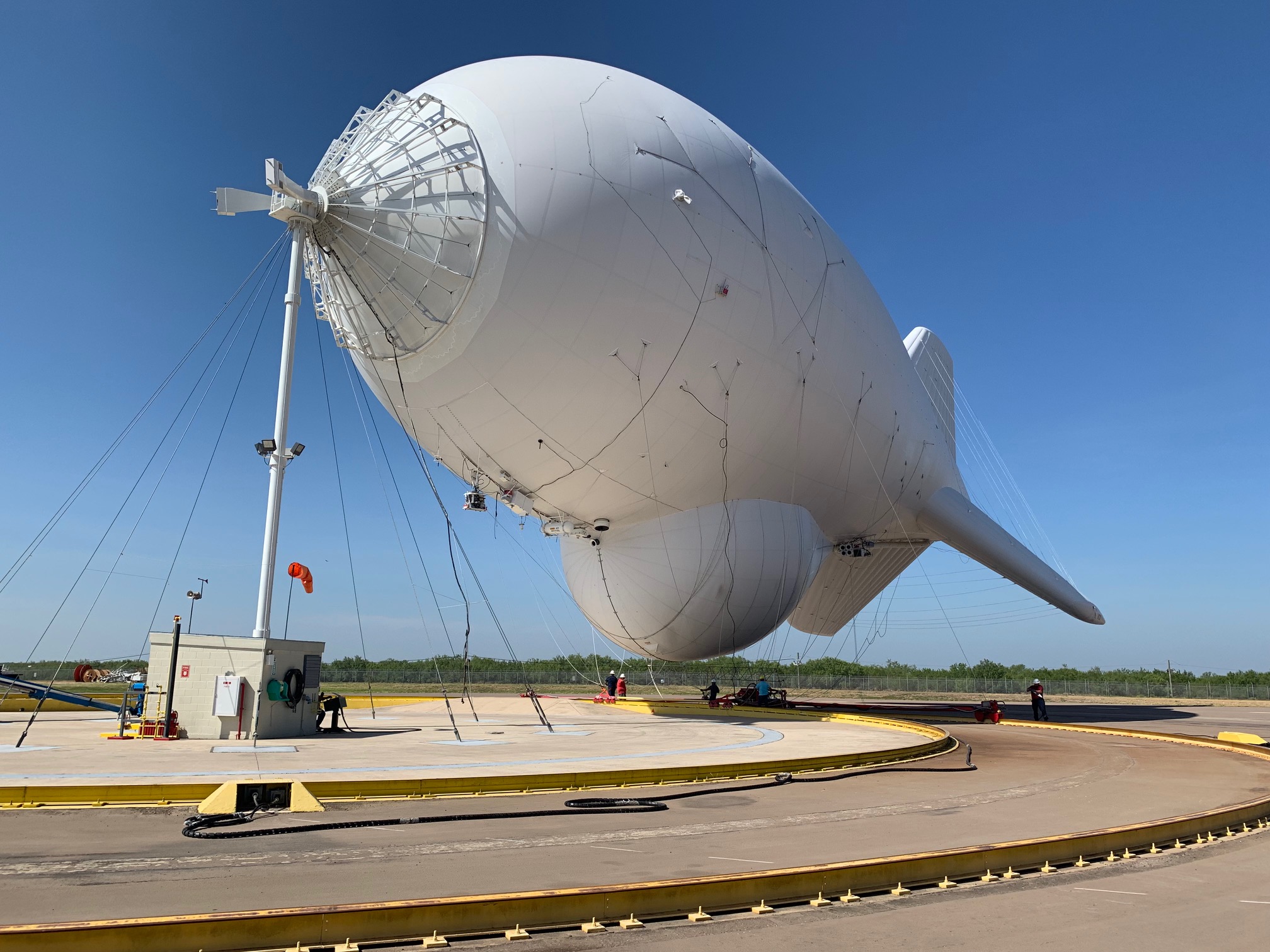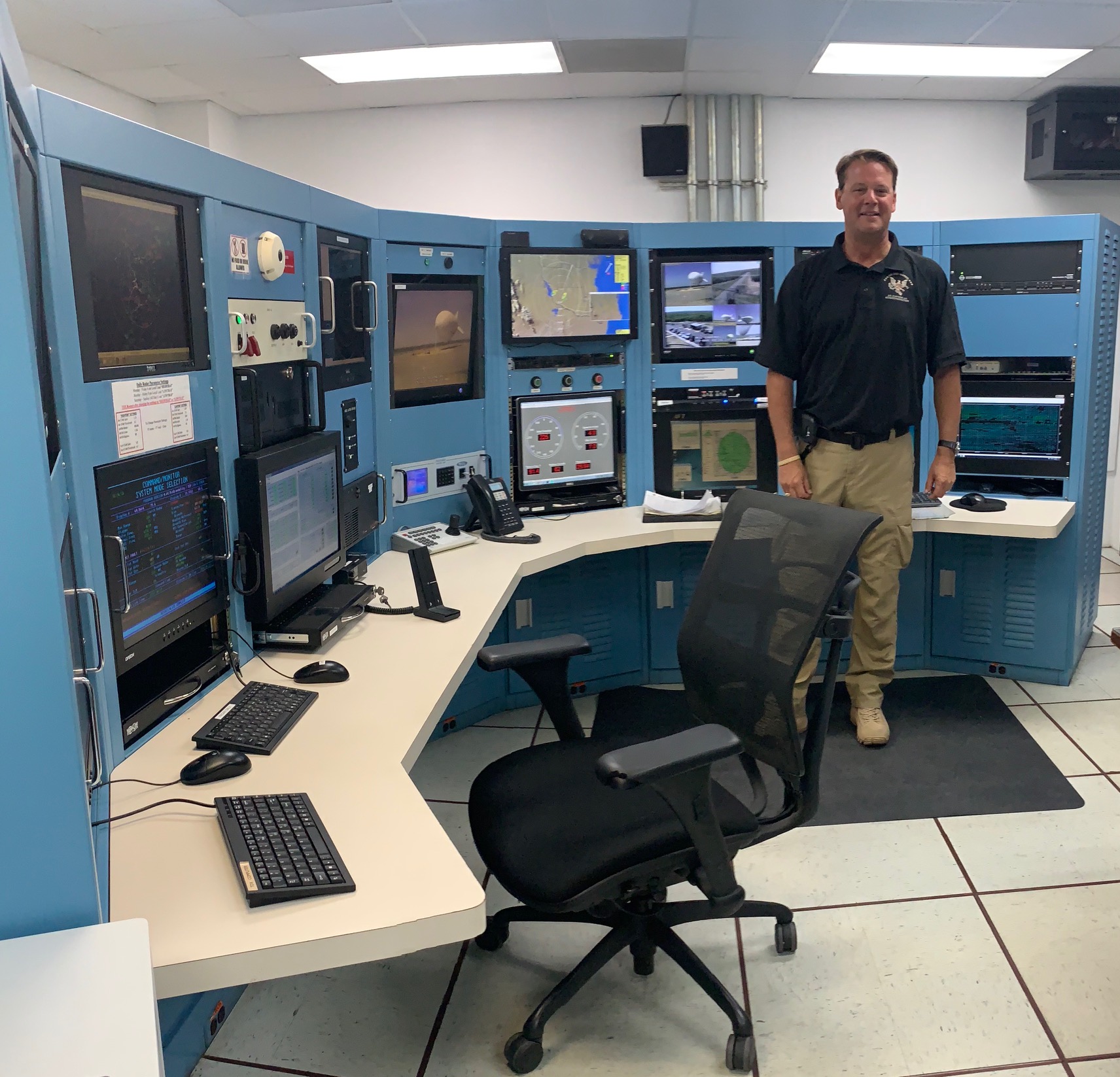RIO GRANDE CITY, Texas — It was just another Monday in 2001 when a few of the country’s top national security officials gathered inside the Pentagon to discuss taking all the air out of a program that used balloons for surveillance near the U.S.-Mexico border.
The goal of the gathering was to push TARS, or Tethered Aerostat Radar Systems, comparable in appearance to unmanned stationary blimps but containing top-of-the-line airplane detectors, onto another department’s shoulders. That day, the Air Force, which had overseen TARS since 1992, washed its hands of it, not caring if the program came to an end.

The next morning, 19 terrorists hijacked four U.S. commercial airplanes and turned off the aircrafts’ transponders. The only way the government was able to track those flights was by using air radars: the same types of radars flying inside the balloons on the southwest border.
“That situation heightened the vulnerability and the security concern against air, and there was no more talk of terminating TARS from that point forward,” explains Rob Brown, a senior official within U.S. Customs and Border Protection’s Air and Marine Operations component.
After 9/11, the Air Force held onto TARS until 2013, when the program was permanently moved to the Department of Homeland Security. Since then, Brown has overseen TARS and affectionately refers to the aerostats as “big ass balloons.” They can also be defined as motionless sacks, filled with a buoyant gas and tethered to the ground, that carry cameras capable of detecting activity far away.
Brown is emphatic that the aerostats are critical to CBP’s border security mission. The Federal Aviation Administration does not have the means to detect aircraft flying near the border, but the 2,200-pound radar sitting two miles up in the air inside a massive white balloon will notice it.
The balloons first lifted off in the 1970s as South Florida and the southwest border struggled to stop smugglers from flying drug-packed small planes into the country.
“We had no capacity to detect them really well, let alone do anything about them,” Brown says. “Air traffic control radars are some distance back off the border, and all that radar energy gets shot out and up because 40,000 feet is where the [commercial] flight is coming from. But as that radar energy propagates out and the Earth starts to curve away [downward], you end up with what we call a radar shadow. There’s a big gap that airplanes can fly all the way to and through our border and never be seen by those radars.”

In the mid-1970s, the U.S. was aware of up to 10,000 small planes illegally crossing the air border each year. The then-U.S. Customs Service under the Treasury Department built and deployed aerostats. The balloons were set up on the Mexico border and in Caribbean islands to detect suspicious air traffic coming from South America.
Brown said only 20 small planes fly over the southwest border annually now because smugglers know they will be detected and arrested once they land in the U.S. Because they know that, planes tend to land in northern Mexico.
“Those short-landers — we see about two to three a day in Mexico,” he says. “[They] give us warning to let Border Patrol and Field Operations know at those port cities, ‘We’ve had a drop-off. You’re going to see a spike [in drug smuggling attempts].’” Port cities are points of entry along the border.
Six of the eight TARS systems are located in Texas, New Mexico, and Arizona. The other two are in Florida and Puerto Rico. The biggest ones top out at 420,000 cubic liters of gas, like the one here in Rio Grande City. A diesel generator powers the balloon’s electronics, which can detect aircraft 200 miles away.

AMO operates the eight TARS balloons, and its CBP sibling, Border Patrol, has six smaller versions across southeastern Texas that only contain cameras, not radars. The feeds from those cameras go directly to local stations where agents can see what is headed their way, allowing them to plan for anticipated human apprehensions or contraband seizures.
While TARS has largely stopped low-flying planes coming over the border, the balloons are increasingly being used to identify less conventional aircraft like drones and ultralights, which resemble go-karts with wings. In one recent case, AMO saw large bundles of methamphetamines being smuggled in.
TARS has also detected an ultralight in which the pilot was flying in two Chinese citizens. Ultralights are detected about once a week.
Footage from the TARS radars are sent to the AMO Center in Riverside, California, and merged with more than 450 other radars that are looking at the air picture all around North America. Data experts act on anomalies they see and will alert local, state, or federal law enforcement.

“We’re the bellringer,” Brown explains.
Riverside can alert Mexican and U.S. partners to be on alert for vehicles or backpackers after a plane lands in Mexico.
Despite the huge size, they come with a relatively small price tag. AMO spends $41 million annually on its eight balloons. The only other radars capable of picking up activity in these remote spots are AMO’s planes, which cost $7,500 a flight hour, compared to $700 for a TARS balloon doing the same mission.
“I have not yet seen capabilities that you can take sensors for surveillance up to altitude and loiter for days on end that’s cheaper than a balloon. That’s why they’re effective. They allow us to get our eyeballs up high,” Brown says.

